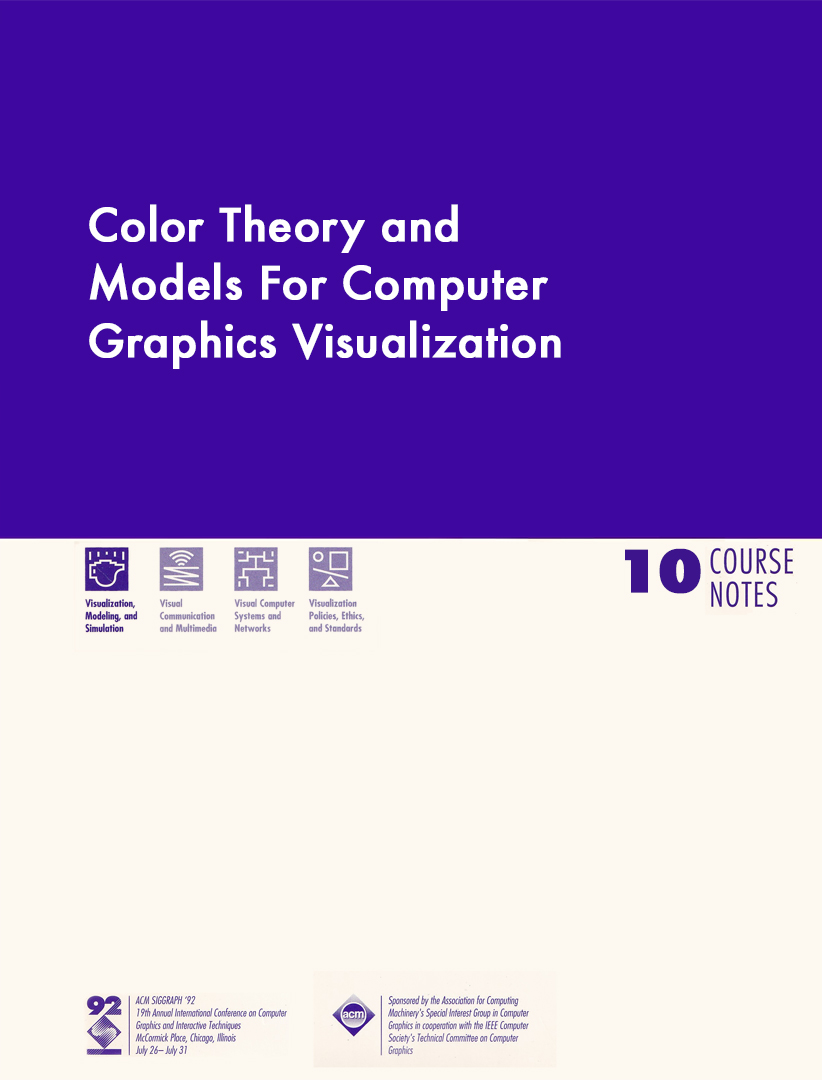“Color Theory and Models For Computer Graphics Visualization” by Levkowitz, Robertson and Rogowitz
Conference:
Type(s):
Entry Number: 10
Title:
- Color Theory and Models For Computer Graphics Visualization
Course Organizer(s):
Presenter(s)/Author(s):
Abstract:
Intermediate
General understanding of and some experience with computer graphics/visualization.
Who Should Attend
People who want a fundamental background of basic color theory to improve their day-to-day graphics/visualization in research, development, and implementation.
Objectives
Students gain a basic understanding of color vision and theory. They learn to apply that knowledge to computer graphics and visualization in order to avoid common problems and generate displays that are more efficient from a human vision point of view.
Description
Color is a powerful aid to visual data representation, when used appropriately. It can be used to code qualitative or quantitative, single-or multi-parameter data. However, the large number of possibilities can degrade the representation rather than improve it. Because of this risk, the use of color has become very controversial. This course introduces color theory and addresses issues on the use of color in graphics and visualization.
Contents/Schedule PDF:
Contributed By:
- Mary Whitton
Location:
- Charles Babbage Institute Archives, University of Minnesota




